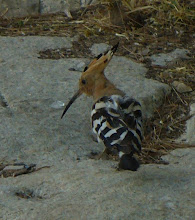A new kind of survey of Giant Pandas in China's Wanglang Nature Reserve has brought some welcome news for conservationists trying to save the endangered species. The census (a collaboration between Chinese and Welsh scientists) used molecular technology to assess panda numbers in the mountainous reserve.
Because pandas are wary of people and difficult to see in their forested habitat, surveys are forced to rely on indirect measuring methods, such as collecting dung samples. Previous surveys have differentiated between individuals by looking at the size of pieces of bamboo in the samples- pandas with bigger bite sizes, void bigger pieces of bamboo in their dung. The obvious draw back of this method is that it is hard to distinguish between 2 similarly sized pandas. The new survey, conducted by Xiangjiang Zhan of the Chinese Academy of Sciences and colleagues, analysed DNA from the samples, instead and so gave a much more accurate estimate of the panda population. The last survey, conducted in 1998, estimated that there were just 27 pandas left in the 28,000 hectare (68,500 acre) nature reserve, but the new study puts the true figure much higher, at 66. Since the new figure was generated by a more accurate method, scientists think it likely that when this method is used to survey the pandas in China's other wildlife reserves, the figure for the total panda population will, be almost doubled from 1,596 to between 2,500 and 3,000.
Xiangjiang Zhan and co-workers' Panda census was published in "Current Biology" (Vol. 16, No 12).
Friday, 30 June 2006
Finding China's Lost Pandas- Science News
Labels:
China,
ecology,
Panda,
population size,
Wanglang,
Wanglang Nature Reserve,
Zhang
Subscribe to:
Post Comments (Atom)









No comments:
Post a Comment